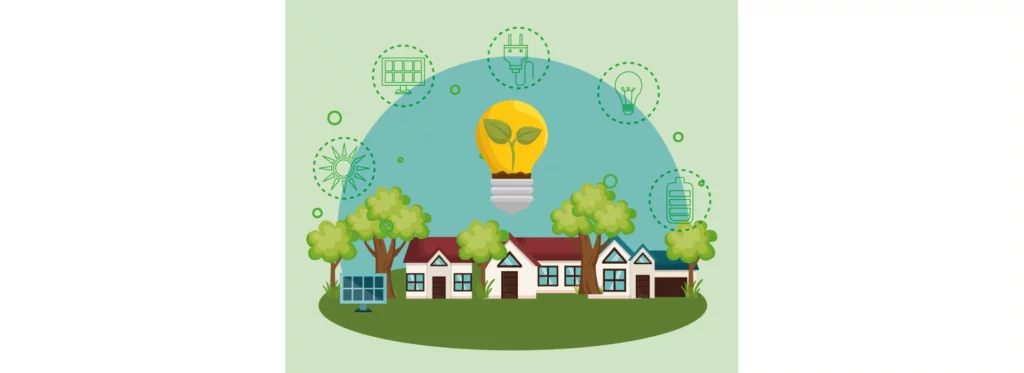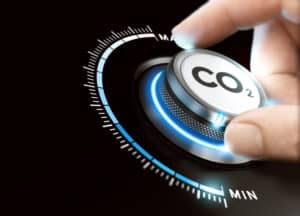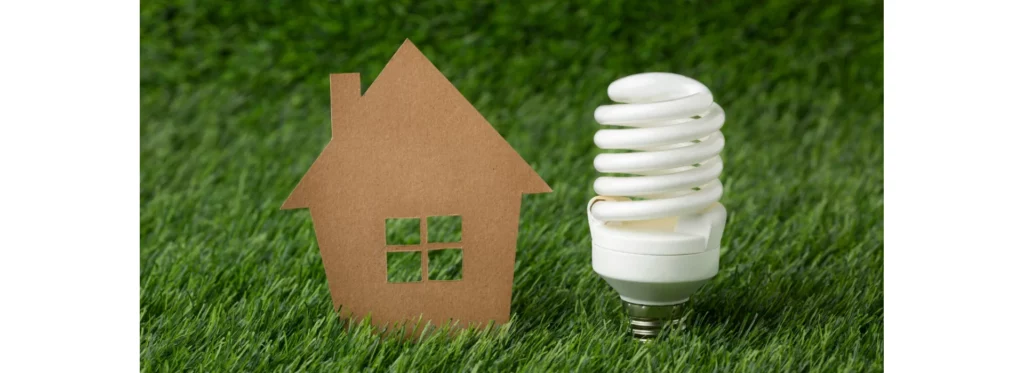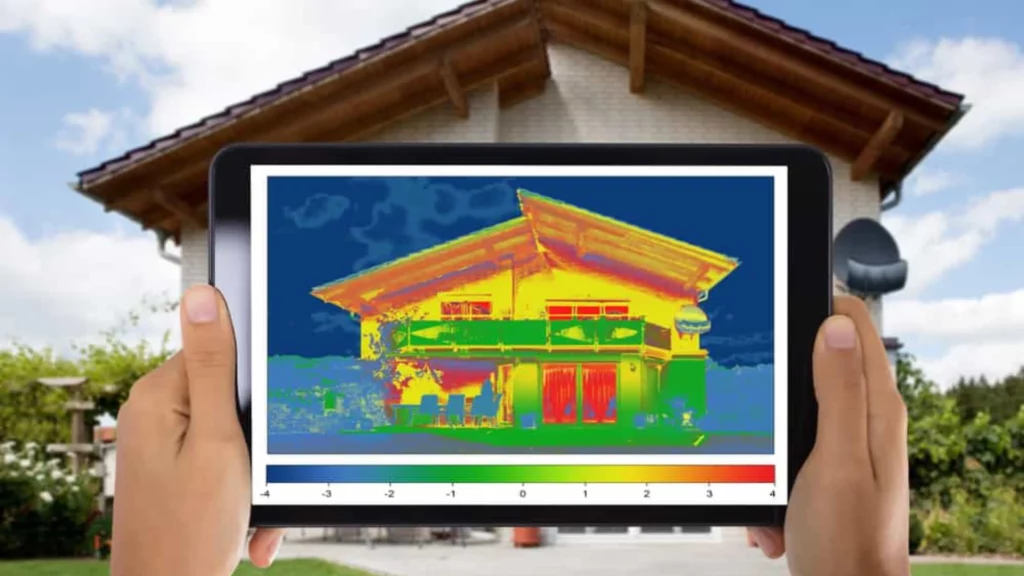To save money on energy bills, residents try to increase power efficiency at home.
This involves maximizing useful power output while minimizing electrical input. It helps manage electrical usage and reduce costs.
To cut costs and maintain comfort, they improve thermal efficiency and choose efficient lighting solutions to reduce energy consumption.
Understanding Power and Efficiency in Homes
To understand the importance of power and efficiency in homes, we must know that power is the energy used by appliances, lighting, and electrical devices.
Efficiency, on the other hand, means using energy wisely to reduce waste and achieve desired results.
Energy efficiency in homes is crucial for sustainable living and fighting climate change.
Smart technologies and wise energy use help homeowners lower utility costs and carbon footprint.

How Smart Solutions Improve Energy Efficiency
Smart solutions have revolutionized energy consumption management in our homes.
They provide numerous benefits, empowering homeowners to make educated decisions and enhance energy efficiency.
Now, let's explore the different smart solutions and their contributions.
- Smart Thermostats: Smart thermostats use AI to learn user behavior and adjust temperature for energy efficiency. They can be controlled remotely via smartphones for cost and energy savings.
- Energy-Efficient Lighting: LED bulbs and CFLs have revolutionized home lighting by being energy-efficient alternatives to incandescent bulbs. They consume less electricity, last longer, and promote sustainability by reducing the need for frequent bulb replacements.
- Home Energy Monitoring Systems: Home energy monitoring systems offer real-time data on energy usage, aiding homeowners in optimizing energy consumption. They identify power-hungry devices and usage patterns, enabling users to adjust habits and appliance usage, leading to lower utility bills.
- Smart Power Strips: Smart power strips combat energy drain from devices in standby mode. They detect inactivity and cut off power supply, saving energy and maintaining convenience.
- Home Automation and AI Integration: AI in home automation optimizes energy use by analyzing data like weather forecasts and occupancy patterns. It adjusts thermostat settings based on the number of people in the house, saving energy without compromising comfort.
- Renewable Energy Solutions: Renewable energy is crucial for energy efficiency. Solar panels utilize sunlight to generate electricity, reducing dependence on traditional sources. Excess energy can be stored or put back into the grid, maximizing savings and promoting sustainability.
- Smart Appliances: Smart appliances like refrigerators, washing machines, and dishwashers save energy by adjusting operations and optimizing consumption based on usage patterns. They help homeowners effortlessly maintain energy-efficient households.

Energy Efficiency is Key to Reducing Energy Costs
American households spend $1,900 yearly on energy bills. To save $450, make easy home improvements.
Switches powered by fossil fuels worsen climate change, air pollution, and respiratory illnesses. Improving energy efficiency saves money, enhances comfort, and benefits the environment.
Investing in energy efficiency brings long-term benefits: job creation, innovation, economic growth, lower energy costs, and reduced greenhouse gas emissions. It improves living standards and enhances national competitiveness.
Switching to energy-efficient home appliances and devices is key to cutting energy costs. It reduces consumption, lowers bills, and eases the burden on the power grid.
This strategy also combats climate change by reducing the need for new power plants and increasing renewable energy capacity.
Enhanced energy efficiency boosts economies, creates jobs, and mitigates pollution and climate change. Americans are adopting energy-efficient products, recognizing the benefits.

The Benefits of Power and Efficiency in Homes
Integrating power and efficiency in homes with the help of smart solutions brings a multitude of advantages for both homeowners and the environment, revolutionizing the way we live and interact with our living spaces:
- Cost Savings and Long-term Financial Benefits: Energy efficiency means lower utility bills, giving homeowners a financial advantage. Smart technologies can reduce energy consumption and save money in the long run, outweighing initial costs. It's a smart and economical decision for homeowners.
- Environmental Stewardship and Climate Impact: Embracing energy efficiency reduces our carbon footprint, combats climate change, and promotes a sustainable future for generations, contributing to a healthier planet.
- Enhanced Comfort and Unparalleled Convenience: Smart solutions save energy and improve daily comfort. Automated systems adjust temperature, lighting, and more for personalized environments. Imagine a home that adapts to your needs, conserving energy and offering an enjoyable living experience.
- Escalating Property Value and Desirability: Energy-efficient homes are in demand in the real estate market because of their long-term benefits. Smart home solutions make these properties more appealing, leading to higher property values and faster sales, giving homeowners a good return on investment.
- Energy Independence and Resilience: Investing in solar panels provides independence and stability by generating electricity, reducing reliance on external sources, and ensuring a stable energy supply during outages.

How it Reduces the Strain on Utilities
Utility companies are adopting smart strategies to minimize consumption and prevent issues like neighborhood blackouts.
For example, the Los Angeles Department of Water and Power can lower air conditioning usage when underground temperatures rise, protecting their equipment.
Although infrastructure costs remain constant, these measures, including smart meters, lessen the strain on utilities and save customers money.
Despite rising operational costs, utilities are encouraging customers to reduce consumption, like adjusting home temperatures and limiting laundry during peak hours.
In Los Angeles, turning off large pumps in July cut electricity usage by 60 megawatts. Shifting electricity use to off-peak times is another effective method, especially as electricity costs more during high-demand periods.
Incorporating renewable sources like solar and wind power also helps lower peak demand and is environmentally beneficial.

It Reduces CO2 missions
The US and EU made progress in cutting CO2 emissions from 2016-2019, with a decrease of 760 million tons.
The EU emits 6-7 billion tons annually. UK also reduced emissions by 170 million tons from 1990-2014.
Reducing emissions is crucial for better air quality, linked to health issues like high blood pressure and diabetes. It eases strain on emergency services and healthcare, and cuts transatlantic flights, saving on petroleum costs.
Carbon dioxide is absorbed slowly by the ocean but stays in the atmosphere for a long time. It is crucial to reduce emissions, even though it is difficult to measure the exact annual absorption amount.
State policies are important. The Regional Greenhouse Gas Initiative aims to cap power sector CO2 emissions at 91 million tons per year, with a goal of reducing them by 10% by 2020.
By 2010, the power sector had already achieved a 30% reduction from baseline levels, partly thanks to this initiative.
It Improves Energy Quality
Energy efficiency solutions have many benefits for the electric power system. They decrease electricity consumption and reduce peak load demands, delaying the need for infrastructure upgrades and improving reliability.
Additionally, these energy efficiency measures, often referred to as non-wires alternatives, are instrumental in boosting system reliability.
This advantage, though sometimes underappreciated, is a critical aspect of energy efficiency technologies.
Investing in energy efficiency programs benefits both consumers and the environment. It reduces utility bills and protects the environment by lowering pollution and blackout risks.
Adopting energy efficiency tech not only saves costs but also lowers bills, boosts local economy, enhances life quality, stabilizes electricity prices, and reduces risks from fuel costs.

Where to Find Smart Solutions for Power Efficiency
With the increasing demand for energy-efficient solutions, various companies now provide smart technologies to meet consumers' needs.
Here are reliable sources to explore and obtain innovative products for enhancing power efficiency in your home.
- Home Improvement Stores: Home improvement retailers are popular for smart home products. They offer a wide range of energy-efficient devices, such as smart thermostats and eco-friendly lighting. Whether you shop in-store or online, these stores have plenty of options to meet your needs.
- Online Retailers: E-commerce platforms like Amazon have dedicated sections for energy-efficient products. They allow easy brand comparison and provide customer reviews for informed decision-making.
- Manufacturer Websites: Smart home companies' official websites serve as centralized platforms for their products, featuring the latest innovations and detailed technical specifications. Customers can easily place orders on these sites for a smooth purchasing process.
- Energy-Efficiency Consultancies: Energy-efficiency consultancies help homeowners find smart solutions by understanding their needs and recommending suitable devices and technologies. Their expertise ensures energy-efficient choices aligned with lifestyle and goals, leading to maximum savings.
- Local Utility Companies: Local utility companies support energy efficiency by providing programs and incentives like rebates or discounts on energy-efficient appliances. Partnering with them makes advanced technologies affordable for consumers.
Conclusion
As a homeowner concerned about energy prices and the environment, I have embarked on a transformative journey to make my home more efficient.
I recognize the importance of optimizing energy consumption and have found smart solutions for an eco-friendly living space.
By using smart technology, I control my energy usage, save money, and create a comfortable environment.
Sources:
Energy efficiency of housing as a tool for sustainable development

